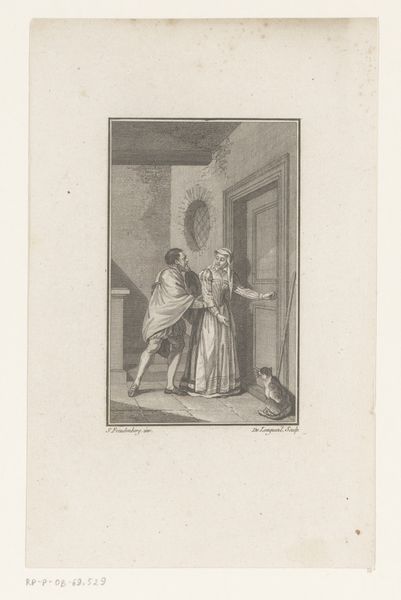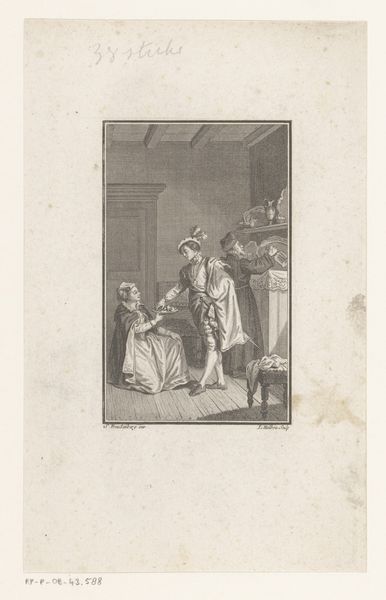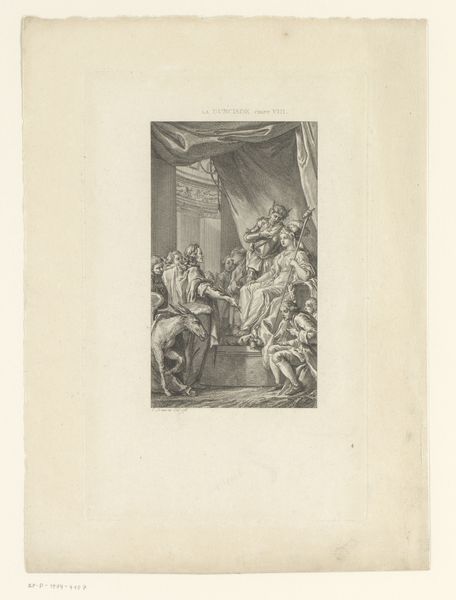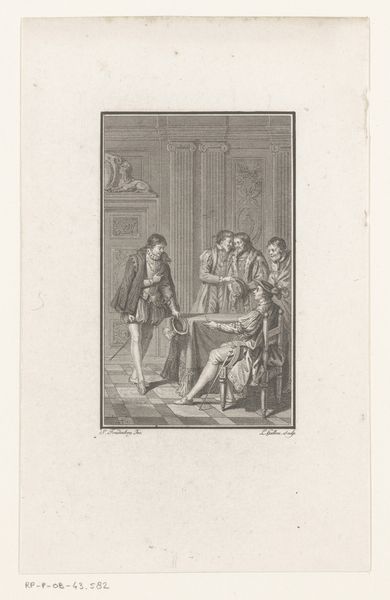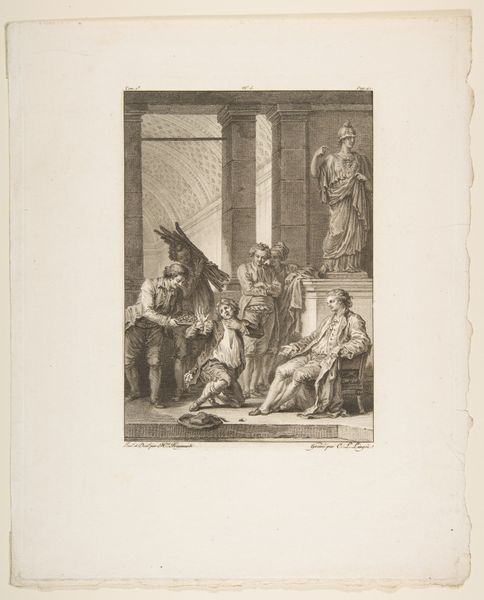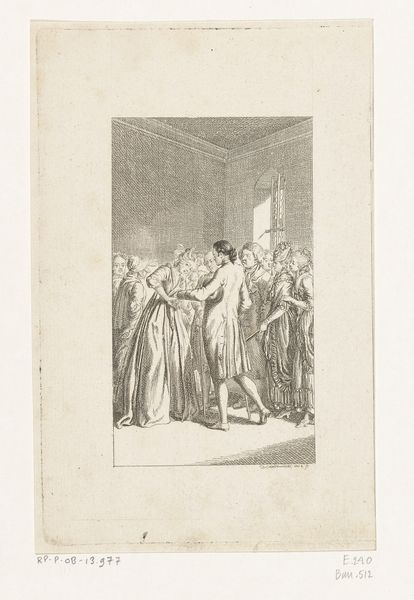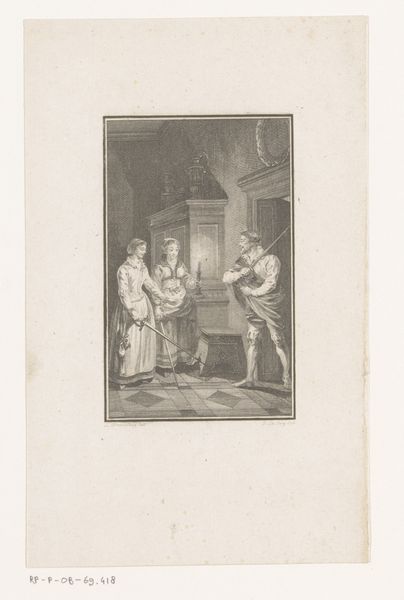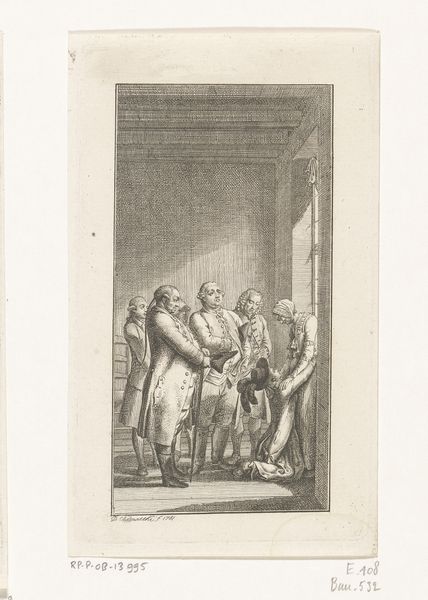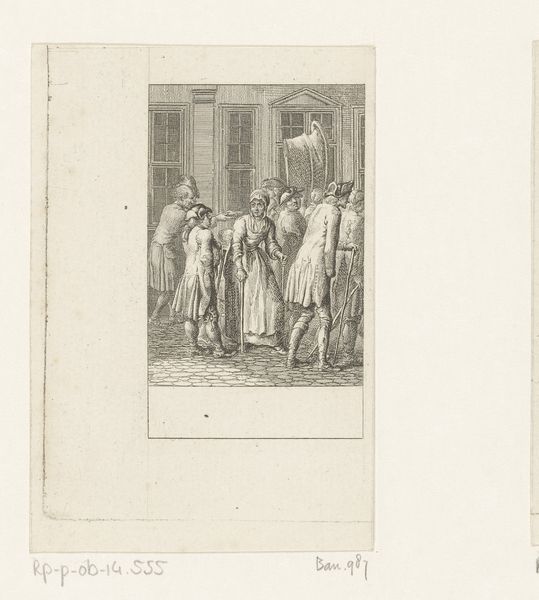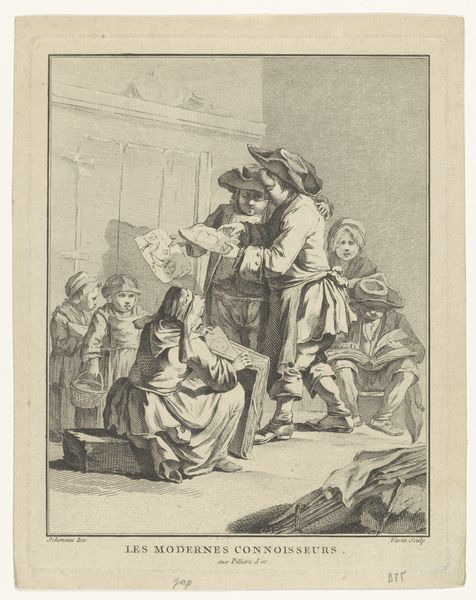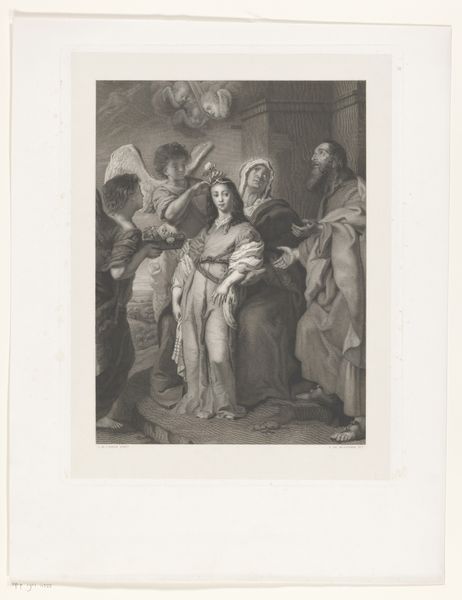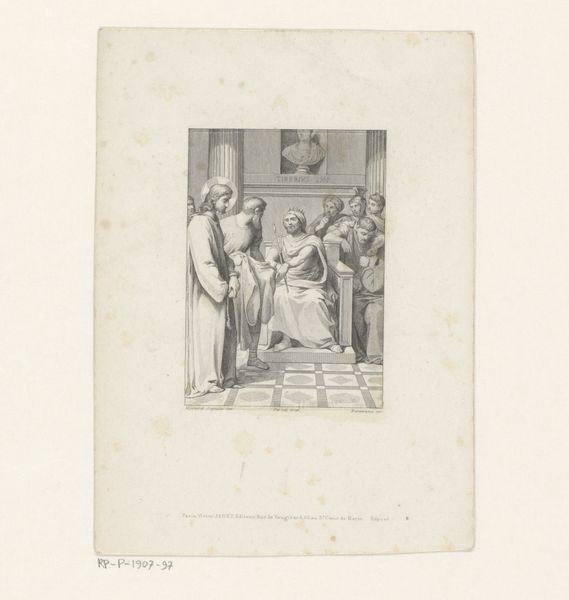
Dimensions: height 185 mm, width 115 mm
Copyright: Rijks Museum: Open Domain
Editor: Here we have Louis Michel Halbou’s engraving, "Two Men at a Table with an Angry Kitchen Maid," created around 1781-1782. It has a distinct Baroque feel, and the interaction between the figures creates an immediate sense of tension. I’m curious, what does this image tell you? Curator: What strikes me is the visual narrative of class and labor relations embedded in this print's materiality. It's not just a depiction of a scene; it's a product of very specific economic and social circumstances. Consider the engraving process itself. It’s a medium meant for reproduction, reaching a broader audience than a unique painting. Editor: So the printmaking process is important to understanding the message? Curator: Precisely. The image depicts an unequal exchange. We have two presumably affluent men being served - or rather confronted - by a working-class woman. Notice how her posture and placement disrupts their consumption, interrupting their leisurely activities. The tension you mentioned highlights these imbalances. The very act of creating and distributing such an image questions its own place within that system, doesn't it? Editor: It does make you consider who the print was made for, and what conversations it was meant to start. Curator: And, to go further, the very availability of prints like this helped to shape class consciousness. Images like these played a role in the discussions, disputes, and, eventually, disruptions of power. Editor: I see what you mean! Analyzing it as an object tied to production and distribution opens up the artwork so much more. Curator: It’s about considering art as not just aesthetic, but also a product of labor within a specific social framework. A tangible record, like any historical document.
Comments
No comments
Be the first to comment and join the conversation on the ultimate creative platform.
